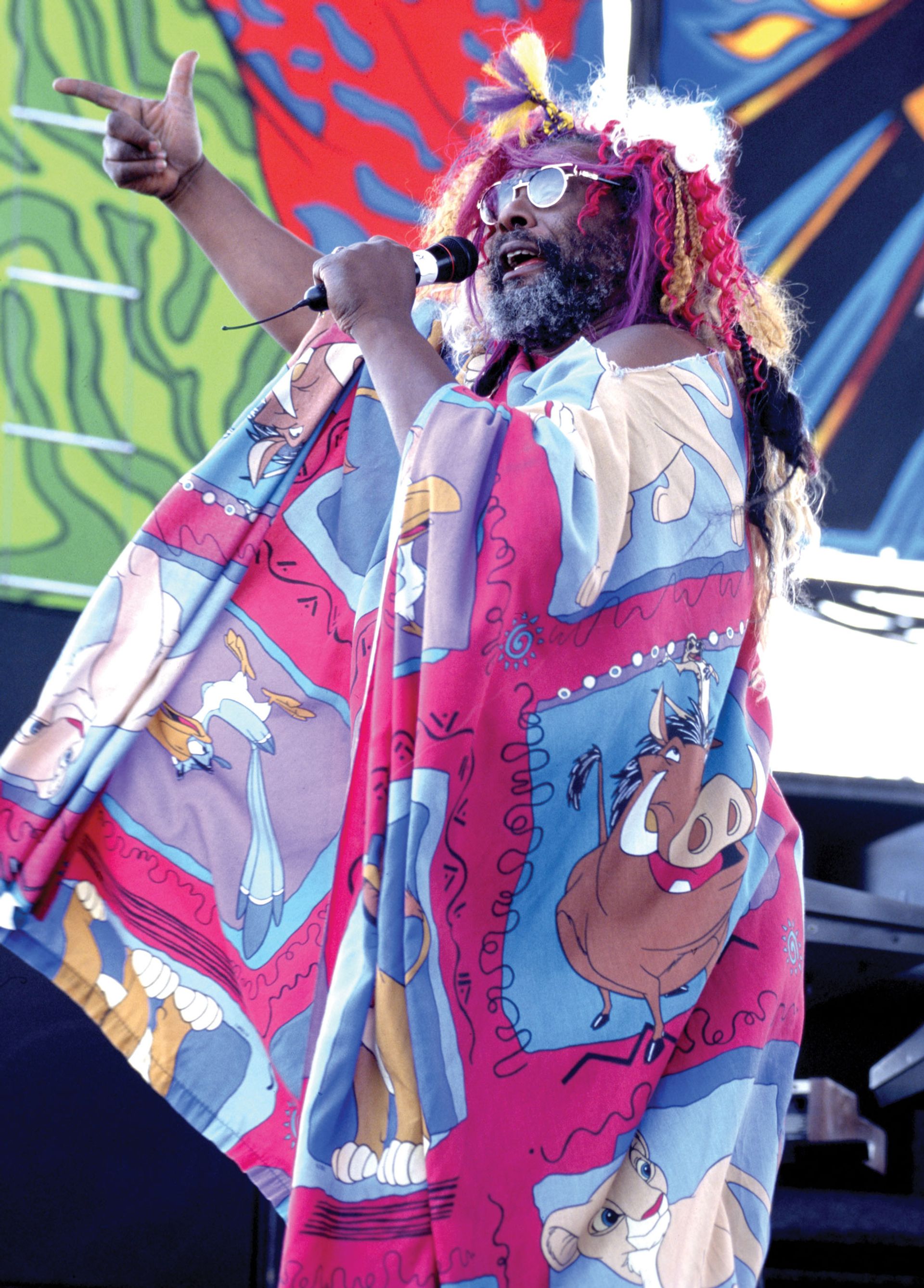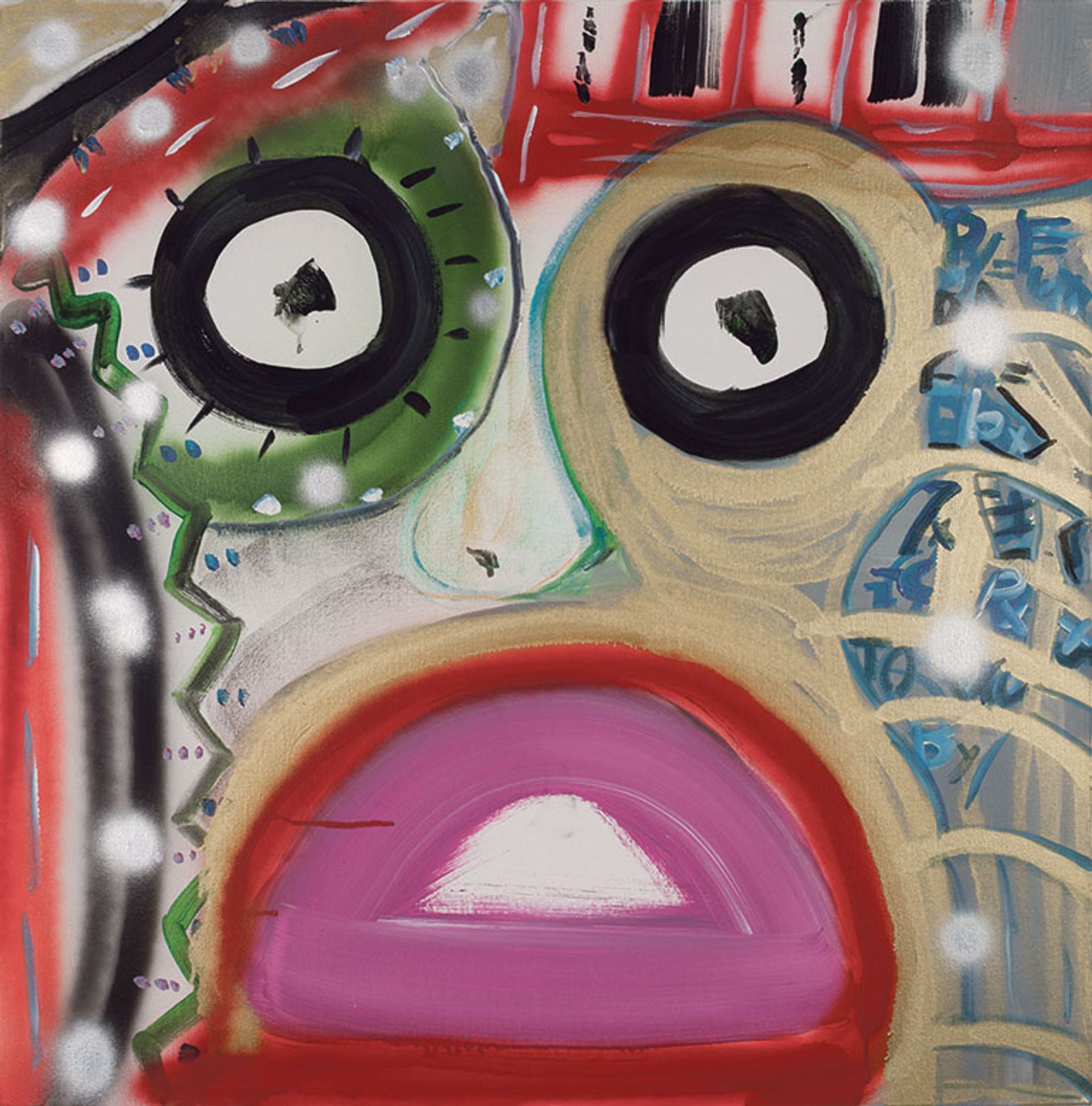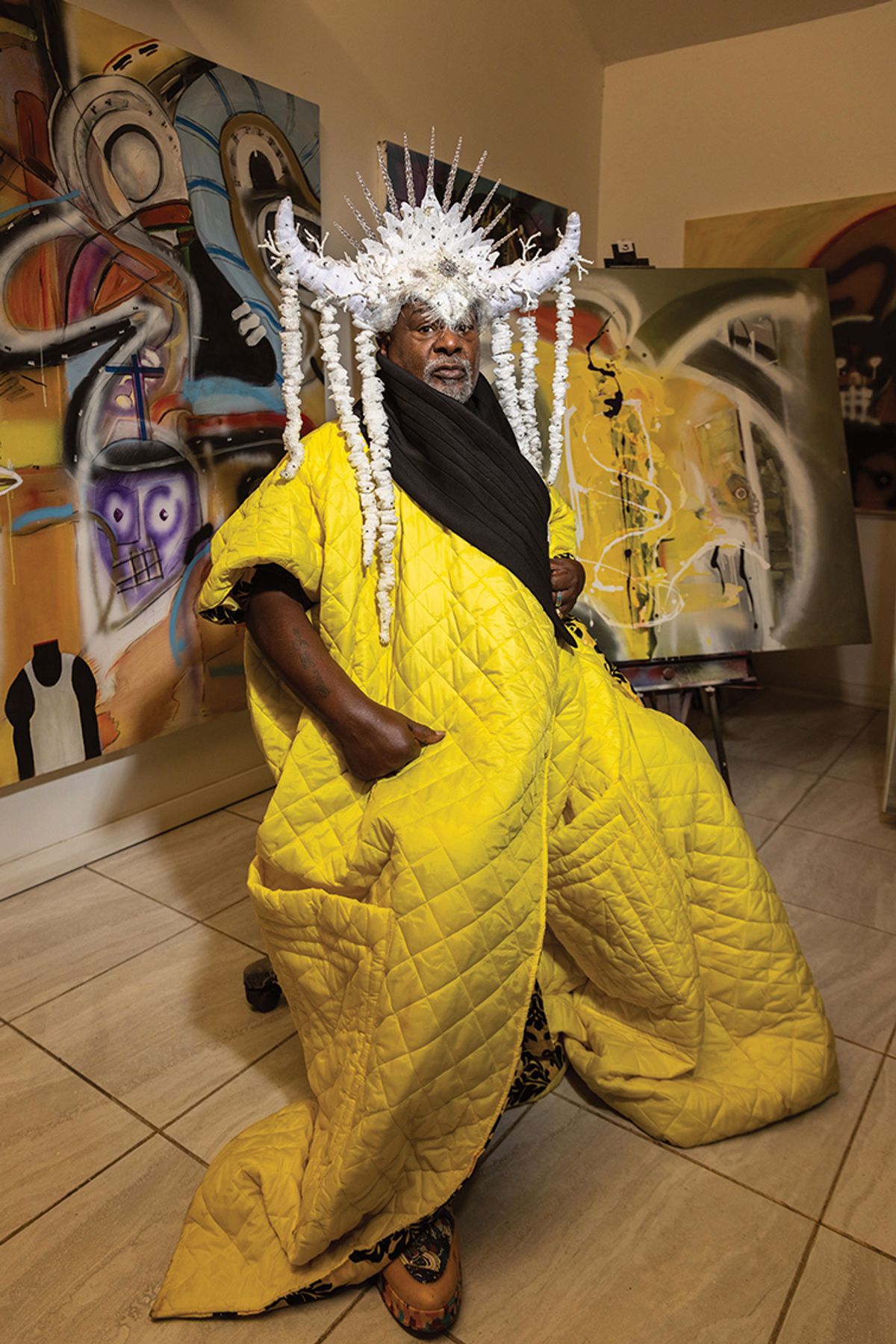Throughout his career, George Clinton worked hard to get people to loosen up, feel the flow and embrace the funk. As a visual artist, his mission has not changed, only his medium.
It is all but impossible to separate George Clinton the man from Parliament-Funkadelic. The music he made with those groups changed minds, opened eyes and made people sweat in the best possible way. But the music has always been inseparable from the aesthetic: sparkling seven-inch platform boots and massive alien motherships, dreadlocks and electric-green leopard-print fur coats, oversized diamond-studded sunglasses. Parliament-Funkadelic were about more than music. They were about feeling free enough to treat yourself like a work of art, all the while not taking yourself too seriously. Few can claim to have influenced so much art, both aural and visual. And with the possible exception of the jazz musician Sun Ra, no one did more than Clinton and Parliament-Funkadelic to proliferate Afrofuturism as a concept, an aesthetic and a way of life.
I’m colour blind, so I had to learn to read the tones and valuesGeorge Clinton
Clinton, whose works are on show at the Soho Beach House in Miami Beach this week, says he “was always doodling”. He adds: “My autograph really was a doodle, two eyes and little nose. It eventually became a dog with ears and everything,” Clinton says. “Then I started doodling at hotels, on the stationary. Once, in the early 1980s, when we were really out of it, we painted and drew all over the walls of my room at the Hotel Mondrian in Los Angeles.” The manager of the hotel, after seeing the room, threatened to kick out Clinton and his band, and left to find the hotel’s owner. “By the time he got back, we had repainted everything. It was fun, just people having fun.”

Performance artist: the always-colourful George Clinton works the crowd at a concert in the 1990s © Photo: Tim Mosenfelder/Getty Images
Go with the flow
Clinton’s approach to painting is not dissimilar from his approach to music. Flow is important, as is knowing your limits. “Once I realised I could use the same theory that I use for making music, that I could go against the grain, it all made sense. I knew what I could and couldn’t do musically, so I was able to break the rules. I’m colour blind, so I had to learn to read the tones and values—how to gradually change colours and blend things together. It’s all in that feeling I get from doing what I do, in my way. When I get a rhythm like that, I can actually trust my feelings on whatever that new logic is. Because right now, everything is up for grabs. All reality is up for grabs.”
Getting in the zone happens over time, and with practice one can reach that state of loose concentration more quickly. Environment helps, and in another similarity to Clinton’s music practice, he thrives in front of an audience. His home in Tallahassee, Florida, is equipped with both a recording studio and a painting studio. While painting, he will often livestream the process on Instagram. Clinton recently regained the copyrights to his music with Parliament and Funkadelic, and has enjoyed reacquainting himself with those tunes as well as other acts from that era, such as Marvin Gaye and Eddie Kendricks, while he paints. Clinton feels at home with social media and to him it is no surprise that people can communicate across the world at a moment’s notice. It slides right into the fundamental theories behind Afrofuturism, community, expansive imagination and freedom from judgment. “That’s the new generation. This is a digital world now. All of the realities we’ve obtained, a lot of stuff that you wouldn’t have thought possible a few years ago,” Clinton says.

Clinton’s acrylic-and-oil Nonplused (around 2020) from his exhibition at Soho Beach house Courtesy of the artist
Afrofuturism has lately been having a renaissance. Recent exhibitions in New York, Chicago and Los Angeles have embraced and propelled Afrofuturism back into the centre of the contemporary art conversation. In November the Metropolitan Museum of Art, New York, opened Before Yesterday We Could Fly, an Afrofuturist “period room”, and in February there are plans for an Afrofuturism festival at Carnegie Hall. Clinton was a indispensable figure in the sphere of Afrofuturism, and that was before he started really painting. “We’re in another high point in the cycle,” says Franklin Sirmans, the director of the Pérez Art Museum Miami, where Clinton has shown before. “There was a moment in the 1990s when we were talking about Afrofuturism. George in many ways is absolutely foundational to that conversation. And with his art practice he is adding to that conversation now, not as an icon of the past or influence but from here, from the present. It’s amazing.”
Clinton is definitely in the present, but his thoughts are always drawn to the futuristic. “I still love all those things, aliens peeking out through different dimensions,” he says, adding that the pandemic has given him time to go back to what he sees as the height of science-fiction: Star Trek. “When you think about it, all the different stories that they came up with, the theories—so much of that is here now. I mean, their Communicators, that’s just a portable computer phone in their hand—an iPhone. Who would have ever thought that was possible?”
• George Clinton: Funkbasel, Soho Beach House, Miami Beach, until 31 January


